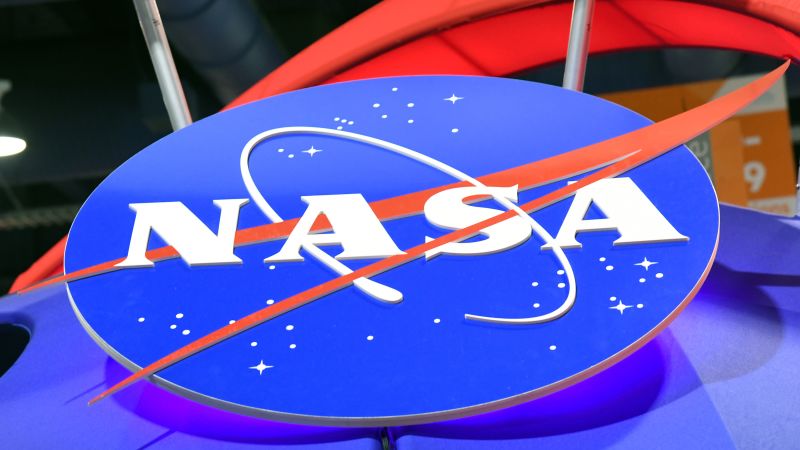NASA is assembling a team to gather data on unidentifiable events in the sky

Sign up for CNN’s Wonder Theory science newsletter. Explore the universe with news on fascinating discoveries, scientific advancements and more.
NASA is putting a team together to study unidentified aerial phenomena, popularly known as UFOs, the US space agency said Thursday.
The team will gather data on “events in the sky that cannot be identified as aircraft or known natural phenomena – from a scientific perspective,” the agency said.
NASA said it was interested in UAPs from a security and safety perspective. There was no evidence UAPs are extraterrestrial in origin, NASA added. The study will begin this fall and is expected to take nine months.
“NASA believes that the tools of scientific discovery are powerful and apply here also,” said Thomas Zurbuchen, the associate administrator of the Science Mission Directorate at NASA Headquarters in Washington, DC.
“We have access to a broad range of observations of Earth from space – and that is the lifeblood of scientific inquiry. We have the tools and team who can help us improve our understanding of the unknown. That’s the very definition of what science is. That’s what we do.”
The team will be led by astrophysicist David Spergel, who is president of the Simons Foundation in New York City.
NASA said the limited number of observations of UAPs made it difficult to draw scientific conclusions about the nature of such events.
“Given the paucity of observations, our first task is simply to gather the most robust set of data that we can,” said Spergel, professor emeritus and formerly chair of the department of astrophysical sciences at Princeton University in New Jersey. “We will be identifying what data – from civilians, government, non-profits, companies – exists, what else we should try to collect, and how to best analyze it.”
A first step for the team would be to attempt to establish which UAPs are natural, NASA said.
In May, lawmakers held the first congressional public hearing on UFOs in decades. The hearing was a high-profile moment for a controversial topic that has long been relegated to the fringes of public policy. Government officials warned that UAPs must be investigated and taken seriously as a potential threat to national security. And a report about UAPs released last year by the US intelligence community has drawn lots of attention.
The search for life
NASA has long been tasked with finding life elsewhere, which is why astrobiology programs are part of the agency’s focus, Zurbuchen said. The Perseverance rover is currently searching for signs of ancient life that may have once existed on Mars while future missions are being developed to seek signs of life on ocean worlds in our solar system. The agency seeks to explore the unknown in air and space, Zurbuchen said.
“We’re looking for the question of whether certain environments are in fact part of, if you want, the ladder of life that got us to where we are,” he said during news conference Thursday.
The agency will approach the UAP study like they would any other science study – taking a field that is poor in data and making it worthy of scientific investigation and analysis.
“There’s many times where something that looked almost magical turned out to be a new scientific effect,” Zurbuchen said.
Given the national security and air safety issues that have been raised with UAPs, scientists want to look at the observations and establish if these are natural or need to be explained otherwise.
While talking about UAPs in a traditional science environment may be looked down on or regarded as something not related to science, Zurbuchen “vehemently opposes that.”
“I really believe that the quality of science is not only measured by the outputs that come behind it, but also the questions we’re willing to tackle with science,” he said.
NASA officials have been thinking about how to study UAPs in a formal way for a long time, but they wanted to ensure that they approached it in the right way, Zurbuchen affirmed. The quality of the science investigation must be the same, no matter the subject.
But this study will be entirely unclassified and within in the public domain, and NASA’s Science Mission Directorate is leading the charge. Zurbuchen said he was unaware of any previous systematic examination of UAP data by NASA.
The intent of the study is to make a proposal for a research program that can be implemented once the researchers assess the data that exists and should be reviewed.
The full report will be made available to the public, and the research team will hold a public meeting to discuss the findings, said Daniel Evans, NASA Science Mission Directorate assistant deputy associate administrator for research, during the news conference. Like NASA’s other standard grant review panels, the budget estimated for this project is between a few tens of thousands of dollars and no more than $100,000, Evans said.
While it’s difficult to anticipate what the study will reveal, Spergel said “we should be open to the idea that we’re looking at several different phenomena.”
“I think we have to approach all these questions with a sense of humility,” Spergel said. “I’ve spent most of my career as a cosmologist. I can tell you, we don’t know what makes up 95% of the universe. So there are things we don’t understand. I hope this study moves us forward to understand these phenomena better. But at the end of the day, we may conclude that we still don’t understand many aspects of them and perhaps have a road map on how to make progress.”
Ross Levitt contributed to this report.


